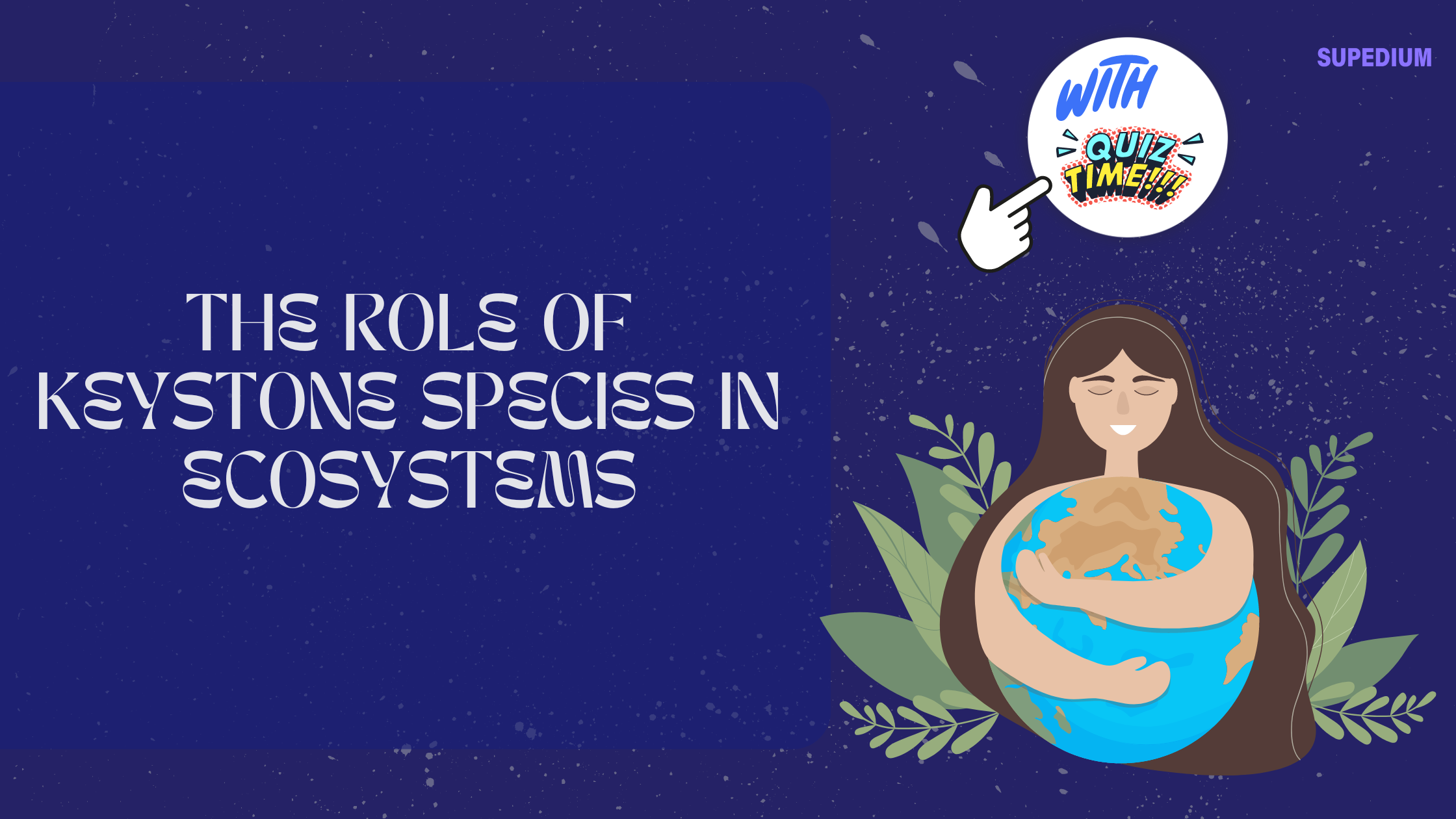Table of Contents [hide]
![]()
Introduction
Keystone species are pivotal to the structure and function of their ecosystems. The concept, introduced by ecologist Robert Paine in 1969, refers to species whose influence on an ecosystem is disproportionately large compared to their abundance. These species play crucial roles in maintaining the diversity, stability, and resilience of ecological communities. Understanding the role of keystone species helps us appreciate their importance in preserving ecosystem health and informs our conservation strategies.
Characteristics of Keystone Species
High Impact on Ecosystem Structure
Keystone species exert significant influence on their environment. Their presence or absence can drastically alter ecosystem dynamics, including species diversity and habitat structure. For instance, a keystone predator may regulate the population of prey species, which in turn affects the entire food web and the distribution of other organisms.
Low Abundance but High Influence
Unlike dominant species, which are abundant and have considerable ecological influence, keystone species often have relatively low population densities. Despite their small numbers, their actions have far-reaching effects on their environment. An example is the sea star, Pisaster ochraceus, which preys on mussels and helps maintain species diversity in intertidal zones.
Trophic Interactions
Keystone species are integral to trophic interactions within ecosystems. They can be predators, herbivores, or mutualists that impact other species through complex relationships. For example, a keystone predator may control the population of herbivores, preventing overgrazing and allowing plant diversity to thrive.
Types of Keystone Species
Keystone Predators
Keystone predators are crucial in regulating prey populations, which helps maintain ecological balance. For instance, the sea otter is a keystone predator in kelp forests. By preying on sea urchins, sea otters prevent these herbivores from overgrazing kelp, thus preserving the habitat for numerous marine species.
Keystone Herbivores
Keystone herbivores influence plant communities and overall habitat structure. African elephants are a prime example. They feed on trees and shrubs, preventing overgrowth and maintaining the savanna ecosystem. Their feeding habits create diverse habitats that support various plant and animal species.
Keystone Mutualists
Keystone mutualists facilitate interactions between other species that are critical for ecosystem function. Pollinators, such as bees and butterflies, are keystone mutualists because they enable the reproduction of flowering plants. Without them, many plant species would decline, leading to reduced food sources for other organisms.
Keystone Engineers
Keystone engineers alter their environment in ways that affect other species. Beavers, for example, build dams that create wetlands. These wetlands provide habitat for numerous species and influence water flow and nutrient cycling in the ecosystem.
Ecological Examples
Marine Ecosystems
In marine environments, sea stars like Pisaster ochraceus play a crucial role by preying on dominant bivalves such as mussels. Their predation maintains biodiversity by allowing less competitive species to thrive. Similarly, sharks regulate marine food webs by controlling the population of mid-level predators and preventing overgrazing of primary producers.
Terrestrial Ecosystems
In terrestrial ecosystems, the reintroduction of wolves into Yellowstone National Park demonstrates the keystone role of apex predators. Wolves control elk populations, which helps regenerate vegetation and benefits various other species, including birds and beavers. Grizzly bears also serve as keystone species by influencing the distribution of their prey and impacting plant communities through their foraging behavior.
Freshwater Ecosystems
In freshwater systems, beavers are keystone engineers. Their dam-building activities create wetlands that support diverse aquatic and terrestrial species. Otters, as keystone predators, contribute to the health of aquatic ecosystems by controlling fish populations and maintaining balanced food webs.
Impact of Keystone Species Decline
Effects on Ecosystem Dynamics
The decline of keystone species can lead to significant changes in ecosystem dynamics. When a keystone predator like the sea otter is removed, sea urchin populations can explode, leading to the destruction of kelp forests and a loss of habitat for many marine species. Similarly, the removal of wolves from an ecosystem can lead to overgrazing by herbivores and subsequent changes in plant communities.
Examples of Ecosystem Disruption
The decline of sea otters in some areas has led to dramatic reductions in kelp forests, which affects the entire marine ecosystem. In Yellowstone, the absence of wolves led to an increase in elk populations, which overgrazed vegetation and altered the landscape. These disruptions highlight the interconnectedness of species and the far-reaching consequences of losing a keystone species.
Consequences for Biodiversity
The loss of keystone species can reduce overall biodiversity. As ecosystems become imbalanced, species that depend on the keystone species or its effects may decline, leading to a loss of diversity and changes in ecosystem function. This can make ecosystems less resilient to environmental changes and disturbances.
Conservation and Management
Importance of Protecting Keystone Species
Protecting keystone species is crucial for maintaining ecosystem health and resilience. Their presence ensures the stability and functionality of ecosystems, and their loss can lead to cascading effects that impact numerous other species. Conservation efforts must prioritize keystone species to preserve the integrity of ecosystems.
Strategies for Conservation
Effective conservation strategies include habitat protection and restoration, sustainable management practices, and research and monitoring programs. For instance, establishing marine protected areas can help safeguard keystone species like sea otters and their habitats. Implementing policies that protect key habitats and regulate hunting can also support keystone species in terrestrial environments.
Case Studies of Successful Conservation Efforts
The reintroduction of wolves to Yellowstone National Park is a notable success story. By restoring wolves to the ecosystem, researchers observed improvements in vegetation and increased biodiversity. Similarly, marine protected areas have contributed to the recovery of sea otter populations and the restoration of kelp forests.
Future Directions
Research Needs
Future research should focus on understanding keystone species in the context of changing environments, including the impacts of climate change. Studying how keystone species adapt to or are affected by environmental changes will help inform conservation strategies and ensure the protection of ecosystems.
Integrating Keystone Species into Ecosystem Management
Integrating keystone species into ecosystem management involves collaborative approaches with local communities and policymakers. By incorporating the needs of keystone species into management plans, we can better address their conservation and support ecosystem resilience.
Conclusion
Keystone species play a vital role in maintaining the structure and function of ecosystems. Their influence extends beyond their abundance, impacting species diversity, habitat structure, and ecosystem stability. Protecting and conserving keystone species is essential for preserving ecosystem health and resilience. Continued research, effective management, and public awareness are crucial for ensuring the long-term survival of these important species and the ecosystems they support.






Be the first to comment